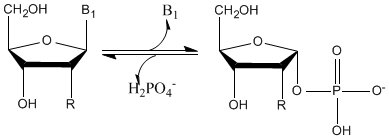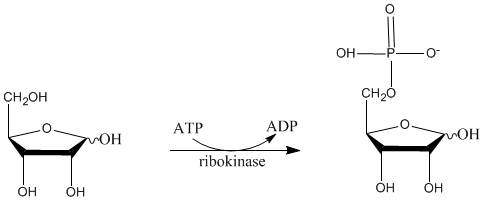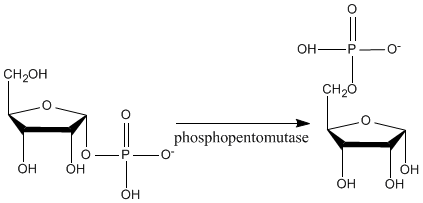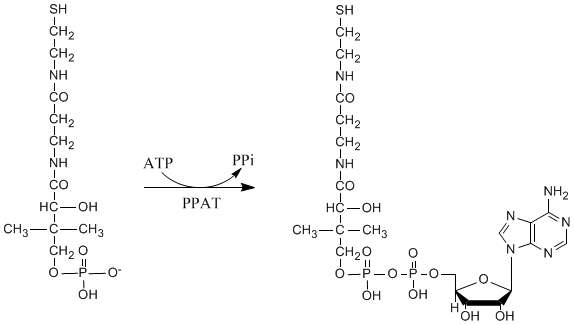|
Hormones
Oxytocin is an oligopeptide hormone produced by the neural lobe of hypophysis. Oxytocin stimulates smooth muscles of uterus. Oxytocin enhances prolactin secretion and the contraction of myoepithelial cells surrounding breast alveoles increasing milk production. Oxytocin also possesses slight vasopressin-like antidiuretic properties.
Oxyntomodulin is a peptide hormone produced by the cells of small intestine during food consumption and responsible for the sense of satiation owing to its effect on the hypothalamic nuclei. The physiological role of oxyntomodulin is to decrease appetite for homeostatic weight regulation. Being an innate human protein oxyntomodulin produces minimum side effects in contrast to known drugs for obesity.
Proinsulin measurements in serum allow to diagnose an insulinome. High proinsulin concentrations are characteristic of type II diabetes, type I diabetes, diagnosed for the first time, and other clinical cases including pregnancy and obesity aggravated by diabetes, functional hypoglycemia and hyperinsulinemia as well as age-specific deviations.
Insulin is a peptide hormone produced in beta-cells of the Langerhans islets. The main effect of insulin is the decrease of glucose concentration in plasma. Insulin increases the penetrability of plasmatic membranes for glucose, activates key glycolysis enzymes, stimulates glycogen formation in liver and muscles, enhances lipid and protein biosynthesis. Insulin also inhibits activity of lipolytic and glycogenolytic enzymes.
Insufficient insulin secretion as a result of beta-cells destruction - an absolute insulin deficiency - is a key element of type I diabetes pathogenesis. Decreased tissue sensitivity to insulin - a relative insulin deficiency - plays an important role in the development of type I diabetes.
Human epidermal growth factor is a strong mitogen for endodermal, ectodermal, and mesodermal cells. It was found in blood, cerebrospinal fluid, breast milk, saliva, gastric and pancreatic juices. Human epidermal growth factor is mainly synthesized in salivary glands. Human epidermal growth factor also stimulates the proliferation of embryonic cells and the increase of calcium release from osseous tissue. It stimulates bone resorption and is a strong chemoattractant for fibroblasts and epithelial cells. Human epidermal growth factor itself and in combination with other cytokines is the most important factor promoting the processes of wound healing and angiogenesis.
Human interleukin 3 (hIL3) is a non-specific hemopoietin stimulating the formation of cell colonies and the proliferation of mature blood cells of various types. Therefore it is used in the therapy of different deseases of hemopoietic organs. hIL3 is also able to induce the functions of auxilliary marrow cells necessary for an efficient immune response.
Thymosin α 1 is one of more than 30 low molecular peptides contained in thymus. It is characterised by immunostimulating activity. In human organism it is synthesized in the composition of a predecessor from which it is split off and then undergoes N-terminal acetylation. However, it has been established that N-desacetylthymosin α1 also manifests the whole gamut of the biological activities of the native peptide.
Thymosin α 1 is a promising drug presently used for the therapy of various bacterial (including drug resistant tuberculosis) and viral (hepatitis B and C) infections, as well as some tumors.
Glucagon is a peptide hormone produced by α cells of the Langerhans islets and participating in carbohydrate and lipid metabolism. It is a physiological antagonist of insulin and stimulates its secretion. These properties of glucagon are especially valuable, when it is used for the therapy for hypoglycemia. Human glucagon is a 29 amino acid polypeptide.
(in development stage)
Calcitonin is a polypeptide hormone known to participate in calcium and phosphorus metabolism and to balance the activity of osteoclasts and osteoblasts. Calcitonin decreases calcium and phosphate concentration in blood plasma owing to calcium and phosphate capture by osteoblasts. It also stimulates the proliferation and functional activity of osteoblasts. At the same time it inhibits the proliferation and functional activity of osteoclasts and bone resorption.
Calcitonin has been used as a drug for osteoporosis for more than 30 years, it decreases the risk of spinal and other types of fractures, which has been proved by the WHO investigations.
Polypeptides for medical application
(in development stage)
Cyclotides are unusual plant-derived small proteins with a circular backbone. Cyclotides can be used as antitumor and antiviral drugs, insecticidal agents, and protease inhibitors.
(in development stage)
Recombinant exendin-4 is a glucagon-like peptide-1 originally isolated from intestines of Heloderma suspectum. It shows 50% sequence similarity to mammalian glucagon-like peptide-1 (GLP-1). It stimulates insulin secretion without drastic decrease of plasma glucose concentration that usually takes place as a result of the use of insulin and other antidiabetic drugs. The latest investigations have resulted in the creation of a unique drug for type 2 diabetes on the basis of the saliva of Heloderma suspectum.
Exendin-4 enhances glucose-dependent insulin secretion, but supresses glucagon secretion. It also stimulates B-cell proliferation.
(in development stage)
Hirudin is a direct action anticoagulant decreasing the activity of thrombin in blood. Anticoagulants are used in the therapy of myocardium and lung infarct, thrombocytic and embolic insults, thrombophlebitis and others, as well as in the preventive treatment of atherosclerosis of coronary arteries, brain vessels, rheumatoid mitral valve diseases. In surgery it is used to prevent thrombus formation during the post-operative period.
A mycobacterial antigen ESAT-6 was identified in short-term culture filtrates of Mycobacterium tuberculosis and is easily found in patients with tuberculosis. This antigen contains a variety of epitopes recognized in more than 90% of patients. ESAT-6 has recently been shown to be an ideal candidate for diagnostic test that will discriminate between infected and BCG-vaccinated persons.
ESAT-6 is mainly used for antibody production and development of test systems for tuberculosis. In the future the creation of a vaccine on the basis of ESAT-6 with liposomal adjuvant or polyoxidonium is possible.
Azurin is a member of a family of copper-containing proteins also called “blue-copper proteins” due to their intensive blue colour (Imax about 600 nm). This protein is involved in electron transfer reactions in some plants and bacteria. Azurin has recently been shown to kill cancer cells of different types (breast cancer, intestinal cancer), that makes it a potential antitumor drug.
The mechanism of action of azurin is associated with its ability to bind protein p53 (a tumor suppressor that promotes cell cycle arrest or apoptosis). In normal cells p53 is a short-lived protein that exists in the cell no longer than a few minutes. Azurin penetrates the affected cell, binds p53 and prevents it from degradation increasing the level of the suppressor in the cell.
Angiogenic and antiangiogenic substances
(in development stage)
Tumstatin is a 28 kDa NC1 domain fragment of the α 3 chain of type IV collagen that inhibits proliferation (but not migration) of endothelial cells and induces caspase-dependent apoptosis specifically in endothelial cells. Tumstatin-derived peptide (residues 69 – 95) was shown to obtain the same anti-angiogenic properties.
(in development stage)
Endostatin, a 20 kDa COOH-terminal fragment of collagen XVIII, is an endogenous angiogenesis inhibitor. Endostatin binds VEGF receptor KDR/Flk-1 and thus blocks angiogenic action of VEGF. Endostatin-derived peptide (residues 1 – 49) inhibits proliferation and migration of endothelial cells, blocks angiogenesis in vitro è in vivo.
(in development stage)
VEGF165b isoform differs from VEGF165 by six C-terminal amino acids. VEGF165b binds the VEGFR-2 receptor and suppresses angiogenesis and endothelial cells proliferation promoted by VEGF165.
(in development stage)
Vascular endothelial growth factor is a potent stimulator of angiogenesis and proliferation of endothelial cells. VEGF165 increases vascular permeability, stimulates migration and inhibits apoptosis of endothelial cells. Recombinant VEGF165 produced in E.coli cells is a non-glycosilated 38231 Da homodimer.
(in development stage)
Pigment epithelium derived factor (PEDF) is a secreted 50 kDa glycoprotein that has been identified in a wide variety of human fetal and adult tissues. PEDF is a potent endogenous anti-angiogenic factor (2-fold more active than angiostatin and 7-fold more active than endostatin), it inhibits the migration of endothelial cells. PEDF selectively inhibits the formation of new vessels but does not appear to harm the existing vascular structure. PEDF-derived peptide (residues 24-57) was shown to induce apoptosis and inhibit the migration of endothelial cells, but lacked neurotrophic properties.
Enzymes of nucleic acid metabolism
These enzymes are widely used for the synthesis of modified nucleotides (virasol, cladribine, fludarabine) which are efficient antiviral and antitumor drugs.

E.coli ribokinase is enzyme participating in ribose and deoxyribose phosphate metabolism. It is used to produce nucleosides with modified ribose residue.

E.coli ribomutase is enzyme participating in ribose and deoxyribose phosphate metabolism. It is used to produce nucleosides with modified ribose residue.

(in development stage)
Adenine phosphoribosyltransferase is widely spread in nature, it is produced in bacteria and eukaryotes, participates in the alternative de novo synthesis of purine nucleotides.
(in development stage)
Ribose-phosphate pyrophosphokinase is the key enzyme in the synthesis of purine and pyrimidine nucleotides.
Enzymes
Coenzyme A is involved in a great number of metabolic pathways, in particular it participates in the synthesis of the cell wall components of mycobacteria. Therefore PPAT is a very promising target in the search for antituberculosis drugs. PPAT catalyzes the fourth stage of coenzyme A biosynthesis: 
The substance has been passed to A.V.Shubnikov Institute of Crystallography RAS for further investigation.
Alkaline phosphotase E.coli is one of the enzymes increasing the efficiency of biosynthesis of nucleoside analogues.

Acid phosphotase is one of the main enzymes of Mycobacterium tuberculosis metabolism. Acid phosphotase is a probable target for antituberculosis drugs.

TEV protease selectively hydrolyses the peptide bond in sequence -Xaa-Xaa-/-Xbb-, where Xaa is Arg or Lys, Xbb is Ser or Ala.
Protease HIV-1 hydrolyses the peptide bond. It is specific to the P1 residue that must be hydrophobic, and P1' may vary but usually it is Pro.

Thymidine kinase HSV-1 is the key enzyme in the herpes simplex virus (HSV-1 and HSV-2) life cycle. It is a potential target for new anti-herpes drugs.
| 







